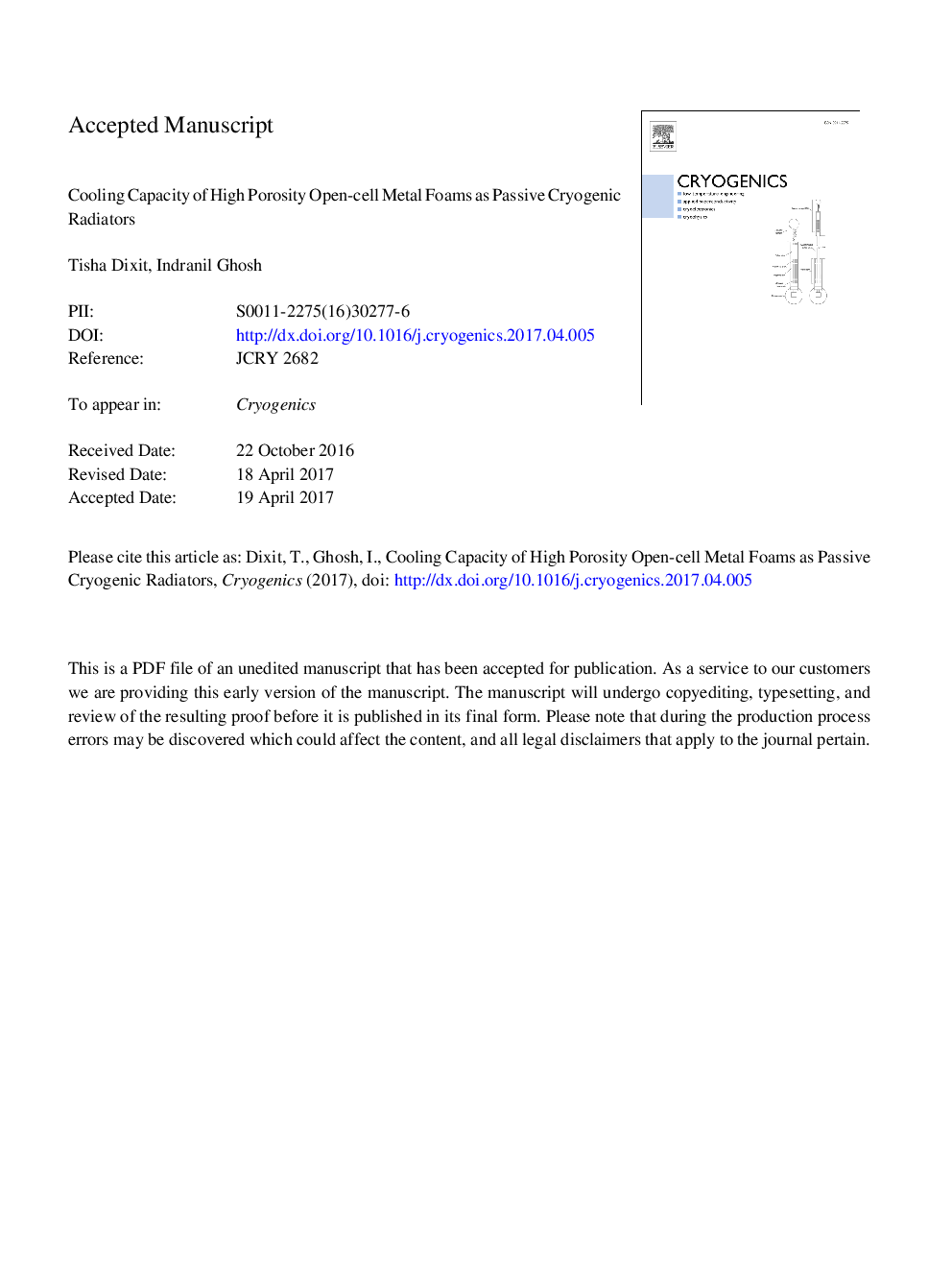| Article ID | Journal | Published Year | Pages | File Type |
|---|---|---|---|---|
| 5444128 | Cryogenics | 2017 | 26 Pages |
Abstract
This work presents an innovative avenue for employment of high porosity open-cell metal foams as extended heat transfer surfaces in passive cryogenic radiators. Metal foams are known for being light in weight and possess high surface area density. In contrast to a solid surface, porosity of metal foams makes it feasible for penetration of radiation thereby resulting in higher radiatively interactive surface area. Two 20 PPI metal foams made of copper and aluminum with 94.9% and 90.3% porosity respectively have been chosen for this study. A laboratory-scale test rig measures the radiative cooling capacity of metal foams in vacuum (10â6Â mbar) subjected to liquid nitrogen environment. Heat load to the foam has been provided by means of convective fluid loop. Simultaneously, a theoretical model based on radiation-conduction fin analysis has been developed to predict the foam cooling capacity at a specified temperature. The required radiation heat transfer coefficient has been obtained from a previous experiment wherein the foam samples are freely suspended in similar conditions but with no heat load. Lastly, performance of the foams under study has been expressed in terms of a commonly used performance parameter (surface area/cooling capacity) for passive cryogenic radiators.
Related Topics
Physical Sciences and Engineering
Materials Science
Electronic, Optical and Magnetic Materials
Authors
Tisha Dixit, Indranil Ghosh,
